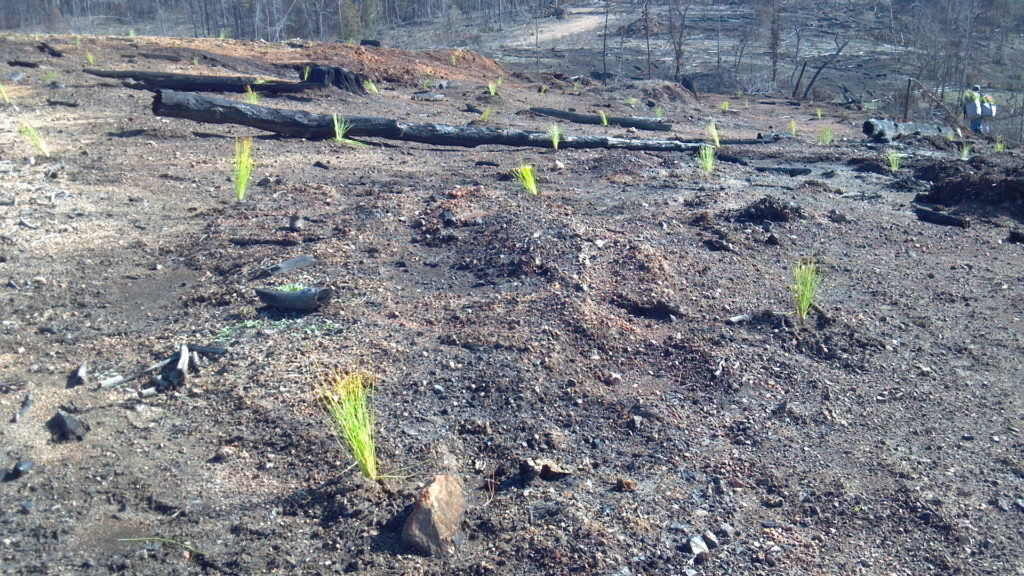It is Spring! The temperature is rising, the pollen is blowing, the snakes are moving about, and all things green are beginning to grow. One day soon you might look out in your field of new young seedlings and say, “Where are they?”
On the day that the trees were planted, you could see every one of them clearly on the prepared well-prepared site. But seedlings are small and as the Spring grasses and weeds grow, you may begin to wonder if your trees have survived.
Longleaf pine and all hardwoods are particularly difficult to locate amongst Spring and Summer growth. Longleaf seedlings look like a clump of grass. Young hardwoods are simply a small stick sporting a few leaves. Both can blend completely into the surrounding vegetation.
What should I do about this?
If you are planting limited numbers of hardwoods in special places, consider purchasing tree tubes to stake over your hardwoods. This will not only make your trees easy to find, it will also prevent early deer browse and makes a nice micro-climate for your hardwoods to prosper in.
The down side is that purchasing and installing tree tubes actually costs more than the seedlings and initial tree planting! Still, the investment is worth it if you have a limited area of hardwoods that are important to your forest plans- such as crabapples planted on the edge of a food plot – or oaks along a driveway.
But what about the many acres of pines that were planted this winter?
If you step out in your new plantation in the upcoming weeks and are worried about your young trees, look for brownish-red colored, dead seedlings. In the new green growth, the trees that have died will stand out!
In a normal year you should only find small numbers of dead pines that were unable to survive the transition from nursery bed to forestland. If you find a LOT of red-dead trees, contact Forestry Consultants, Inc. It is important to do that as soon as you find a problem, so that the issue can be investigated and a remedial plan made. Once a pine has been dead for several months, the needles fall off, the bark slips, and all evidence of the causal agent that killed it will be gone.
If all is well in the Spring, but you begin to worry later in the season when the tangle of vegetation on your land is too thick to walk through, you might want to wait until after first frost in the Fall to inspect again. At that time your seedlings will appear, green amongst the brown annual weeds.

